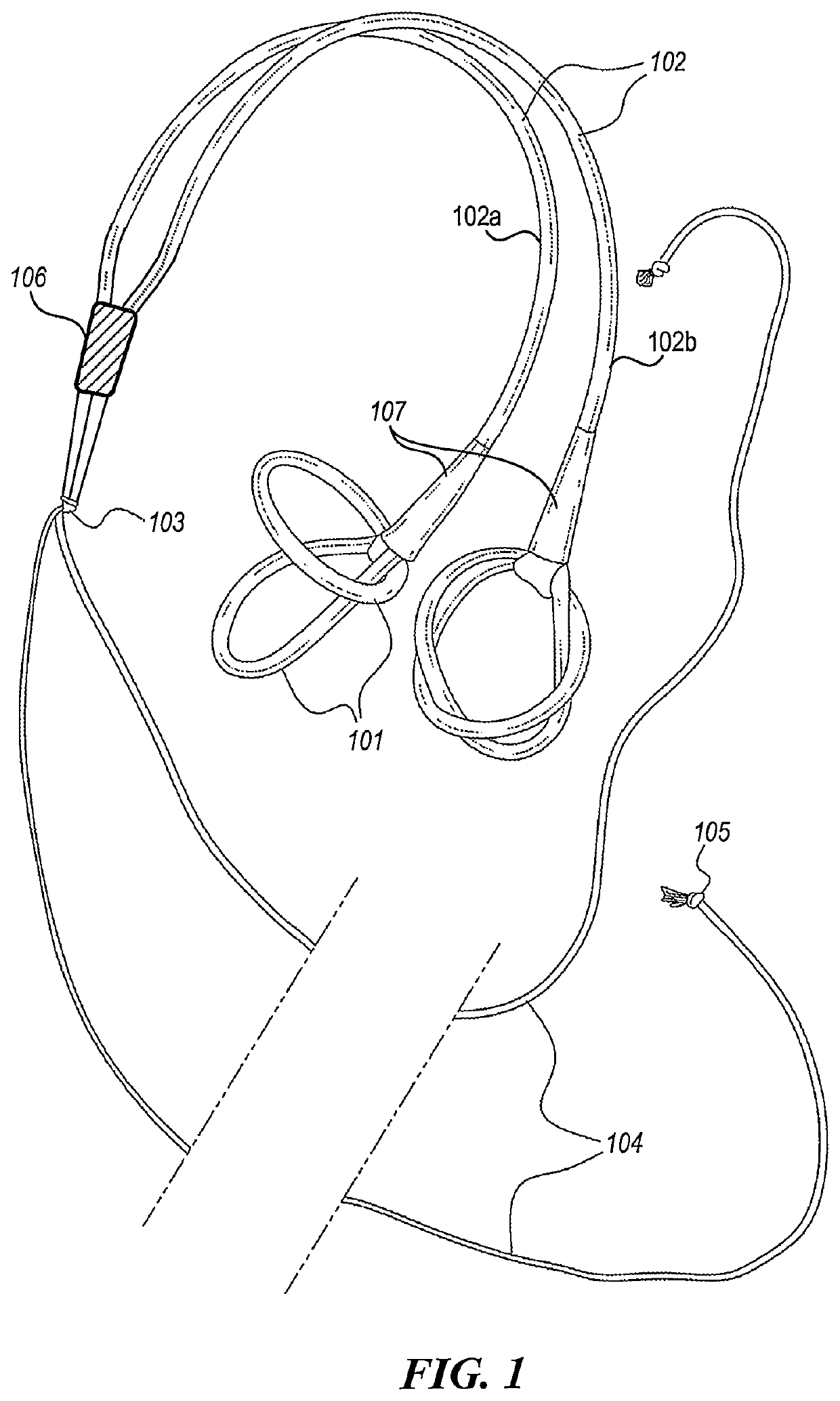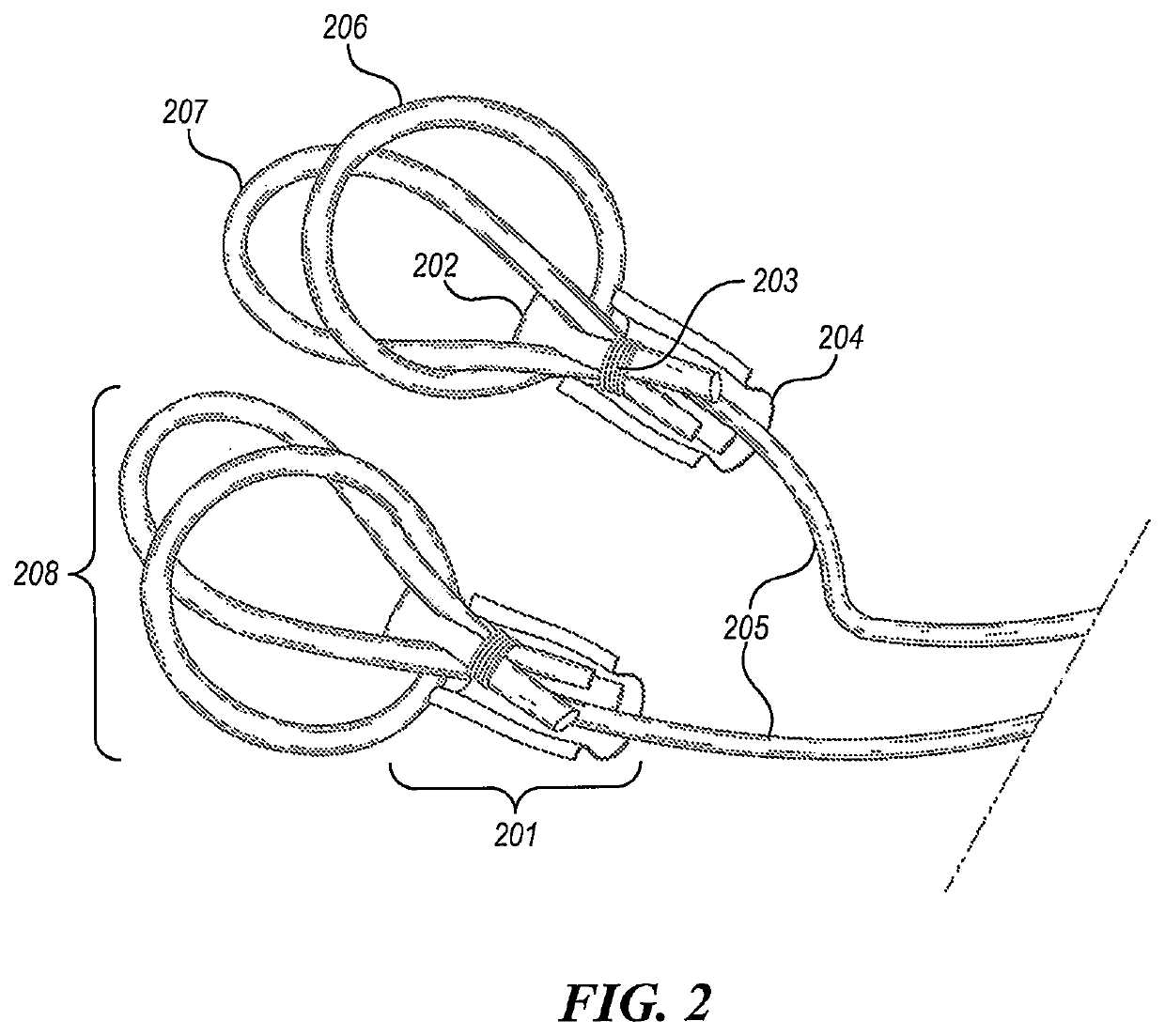Exercise device
a technology of exercise device and splint, which is applied in the field of exercise device, can solve the problems of affecting the movement of fluids, and affecting the movement of organs, so as to achieve the effect of easy movement, tightening and loosening
- Summary
- Abstract
- Description
- Claims
- Application Information
AI Technical Summary
Benefits of technology
Problems solved by technology
Method used
Image
Examples
Embodiment Construction
[0018]FIG. 1 illustrates an example device disclosed in the present application in its resting state. In some embodiments, the exercise device includes a pair of the bands 102 and 104, which are tied together at the juncture 103. The elastic band 102 is formed from surgical tubing (typically made of latex rubber) or other material with similar elastic characteristics. A preferred length for the band 102 is between 52 inches and 92 inches, although the actual length can be any desired value. A preferred girth of the band 102 is between 1.5 and 2 inches though the user may choose tubing of different thickness as needed (with wider tubing generally providing greater resistance). The juncture 103 divides the band 102 into two halves 102a and 102b, each attaching to a looped handle 101 at the other end. The looped handle 101, which includes two or more loops, can wrap around a hand or a foot of the user or may be gripped by a hand of the user. The looped handle 101 can be formed from the...
PUM
 Login to View More
Login to View More Abstract
Description
Claims
Application Information
 Login to View More
Login to View More - R&D
- Intellectual Property
- Life Sciences
- Materials
- Tech Scout
- Unparalleled Data Quality
- Higher Quality Content
- 60% Fewer Hallucinations
Browse by: Latest US Patents, China's latest patents, Technical Efficacy Thesaurus, Application Domain, Technology Topic, Popular Technical Reports.
© 2025 PatSnap. All rights reserved.Legal|Privacy policy|Modern Slavery Act Transparency Statement|Sitemap|About US| Contact US: help@patsnap.com



